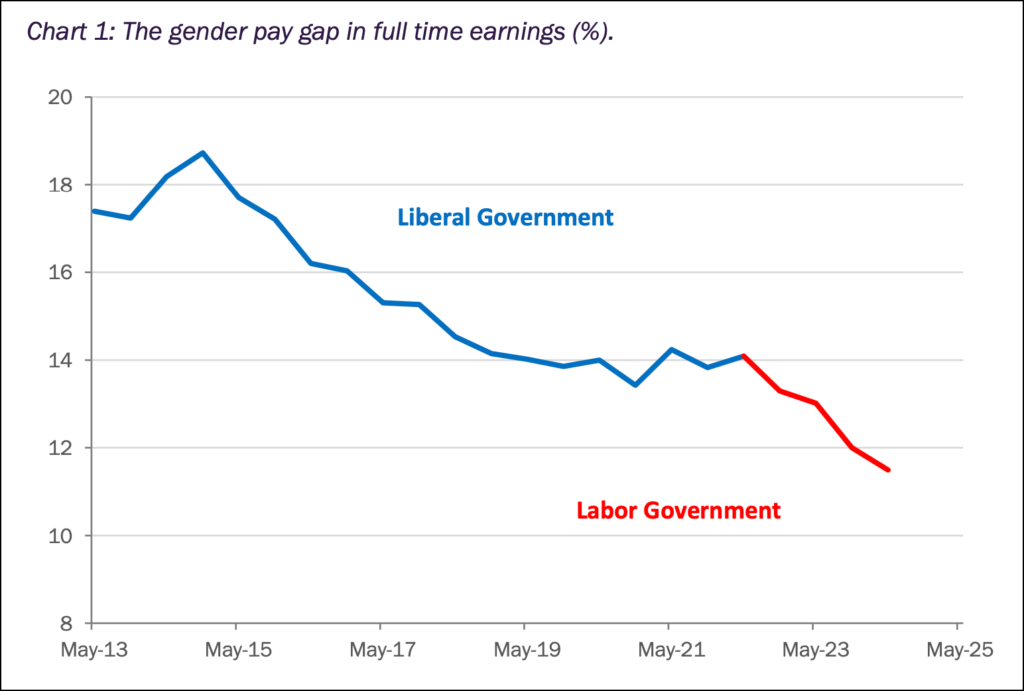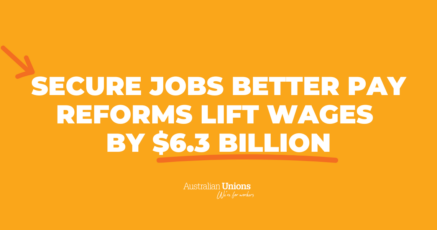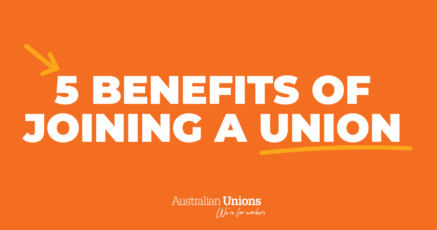There are 42 days left in the year – which Australian women will effectively be working for ‘free’ because of the gender pay gap.
Equal pay has still not been achieved in Australia and more needs to be done to completely close the gender pay gap.
But there is really good news: we have made strong progress recently, with the gap now at its lowest point ever at 11.5%.
What is the gender pay gap and how is it measured?
The gender pay gap is the difference in pay of women and men, usually measured across workplaces, industries, occupations and the workforce as a whole.
This gap highlights gender inequality, demonstrating how women’s earning capacity is reduced from the start of their careers through to retirement.
There are three key measures of the Gender Pay Gap:
- Official full-time measure (Full time average ordinary time earnings of men compared to women)
- Total earnings measure (The pay of all employees, including part time workers)
- Hourly measure (The pay gap on an hourly basis across all employees)
Why are women paid less than men?
There are three main barriers to women receiving the same pay as men:
- The undervaluing of work in female-dominated occupations
- Barriers to participating in work (like unpaid care and domestic work)
- Discrimination in hiring, promotion and pay, among others
Union members have long-been campaigning for meaningful changes that address these barriers. The Albanese Government was elected in May 2022 on a platform of taking action to support working women.
So what does the research tell us?
We’re going to throw around a lot of numbers here – but they’re all important!
At the time of the 2022 federal election (after nearly 10 years of Liberal-Coalition governments), the gender pay gap was still 14.1% of male full-time earnings (the most used measure) – which is exactly where it had been four years prior, leaving women earning $260 less than men per week on average.
Today, that gap has shrunk to $231 less, or 11.5%.
That means the gap is now shrinking by 1.3% on average each year – that’s more than three times as fast as the average annual rate of decline under the Coalition governments, when it was just 0.4%.
Today, a woman working full time is now $36 a week – that’s nearly $1,900 a year – better off than if the Coalition’s lacklustre progress had continued until today.
But that’s not all – research shows that the gender pay gap is shrinking more rapidly on all of the three key measures under this government.
Total earnings is shrinking by 1.2% (compared to 0.8%) and – astoundingly – on an hourly basis, the gender pay gap actually worsened under the Coalition’s time in office, going from 7.0% to 7.2%. Since then, it has nearly halved under this government, shrinking to just 4%.

What is driving this change?
This progress has not happened by accident – it is a direct result of new work rights and wage reforms won by union members and introduced by the Albanese government.
Released today, the ‘Minding the Gap’ report outlines 20 of these major reforms that have contributed to the quicker narrowing of the gender pay gap.
Some of these reforms contribute to addressing more than just one of the three main barriers to women receiving the same pay as men:
1. Gender Equality as a new Object of the Fair Work Act
2. Strong recent increases in minimum and award wages
3. Removing caps on public sector pay and bargaining
4. Equal pay for workers in aged care
5. Equal pay for early childhood education and care workers
6. Further progress towards equal pay across the Award system
7. Multi-employer bargaining
8. Stronger jobs market for women
9. Strengthened rights to flexible work
10. Ten days paid family and domestic violence leave
11. Improved childcare subsidies
12. Stronger protections against insecure work: fixed term contracts and casual work
13. Improved Commonwealth Paid Parental Leave
14. Stronger rights to work from home
15. Fairer rules around part time work
16. A ban on pay secrecy clauses in employment contracts
17. Stronger rules for company reporting on their gender pay gaps
18. Stronger laws to combat sexual harassment at work
19. Costs protection for claimants challenging discrimination and harassment at work
20. Whole of government approach to gender equality
How do we protect this progress?
It’s worth noting that some of these reforms have either only just come into operation or will do so shortly – so the full benefit is yet to be felt.
In fact, if we continue to progress as we are, the gender pay gap in Australia could close completely within nine years. That’s huge!
But only if we protect these reforms from Peter Dutton and the Coalition government.
Dutton’s Coalition in opposition have opposed nearly every single one of these 20 reforms supporting fairer pay for women – and have already threatened to tear up some of them if re-elected.
If we were still under the Coalition, we’d be waiting another 35 years for Australia’s gender pay gap to close.
Working women cannot afford to go backwards under a Dutton government.







SHARE:
20 reasons why the gender pay gap is closing faster